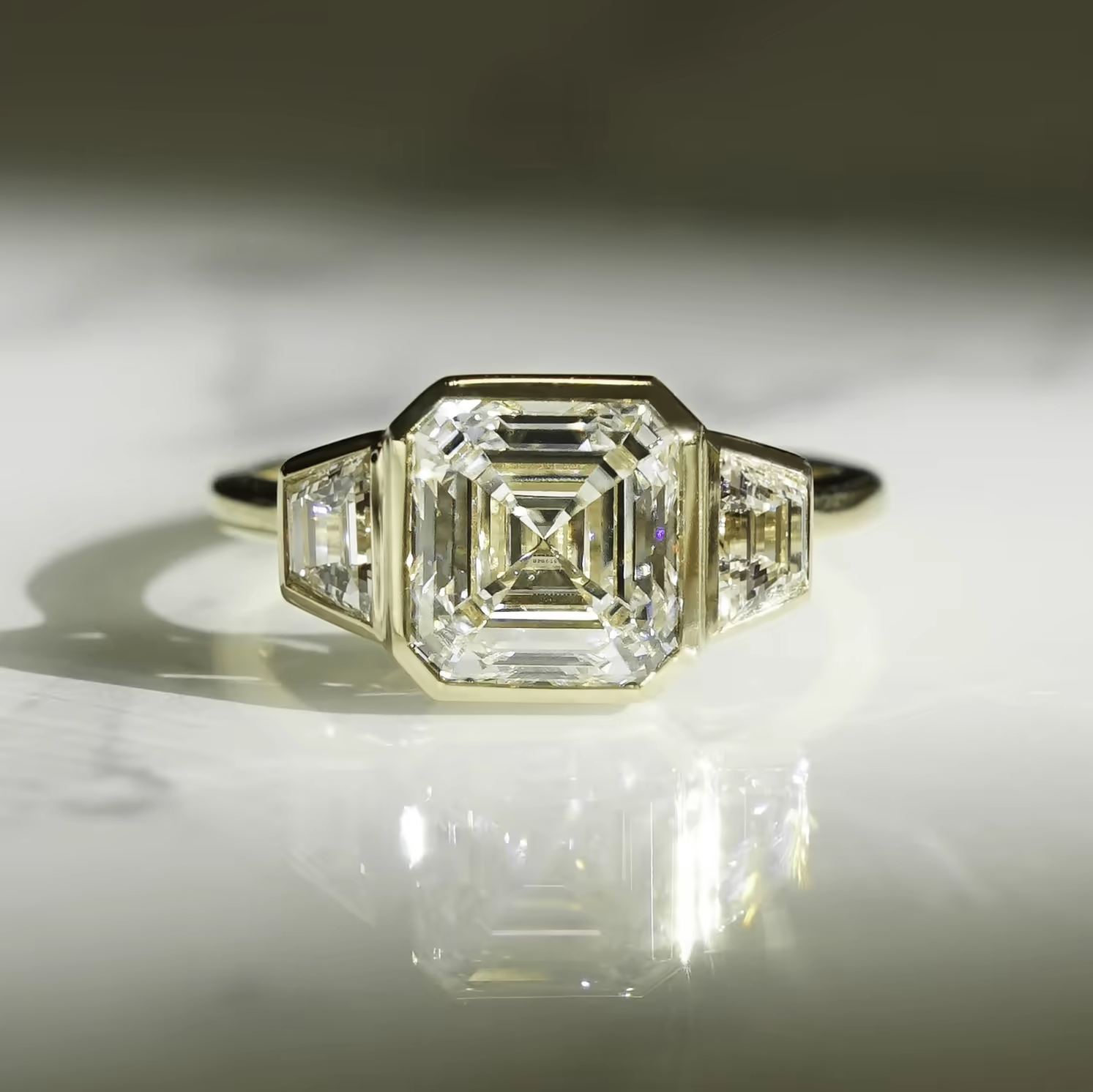1Select your setting
2select your Stone
3CONFIRM
filters
sort :Recommended
Recommended
The Mosaic The Mosaic Asscher
$1,640+
$1,640+




The Chiclet The Chiclet Asscher
$1,540+
$1,540+




The Daily Bezel XL The Daily Bezel XL Asscher
$1,920+
$1,920+




The Echo Half Bezel The Echo Half Bezel Asscher
$1,620+
$1,620+




The Lunette Edge The Lunette Edge Asscher
$1,440+
$1,440+




The Triple Bezel The Triple Bezel Asscher
$1,530+
$1,530+




The Gumdrop The Gumdrop Asscher
$1,790+
$1,790+




The Double Stack The Double Stack Asscher
$1,620+
$1,620+


Clutch Three Stone Clutch Three Stone Asscher
$1,580+
$1,580+


The Bombshell The Bombshell Asscher
$1,920+
$1,920+


The Double Scoop Kite The Double Scoop Kite Asscher
$800+
$800+


The Deco Bullet The Deco Bullet Asscher
$2,710+
$2,710+


The Plunge Compass Pavé The Plunge Compass Pavé Asscher
$1,540+
$1,540+


The Plunge Compass The Plunge Compass Asscher
$1,140+
$1,140+


The Chantilly The Chantilly Asscher
$1,490+
$1,490+




The Solo The Solo Asscher
$1,290+
$1,290+


The Symphony The Symphony Asscher
$1,890+
$1,890+


The Daily Bezel The Daily Bezel Asscher
$1,040+
$1,040+


The Plunge The Plunge Asscher
$1,040+
$1,040+


Plunge Hidden Halo Plunge Hidden Halo Asscher
$1,240+
$1,240+


Harper Pavé Harper Pavé Asscher
$1,140+
$1,140+




The Cathedral The Cathedral Asscher
$900+
$900+


Showing 22 of 37 products
Frequently asked questions forAsscher Cut Engagement Rings

